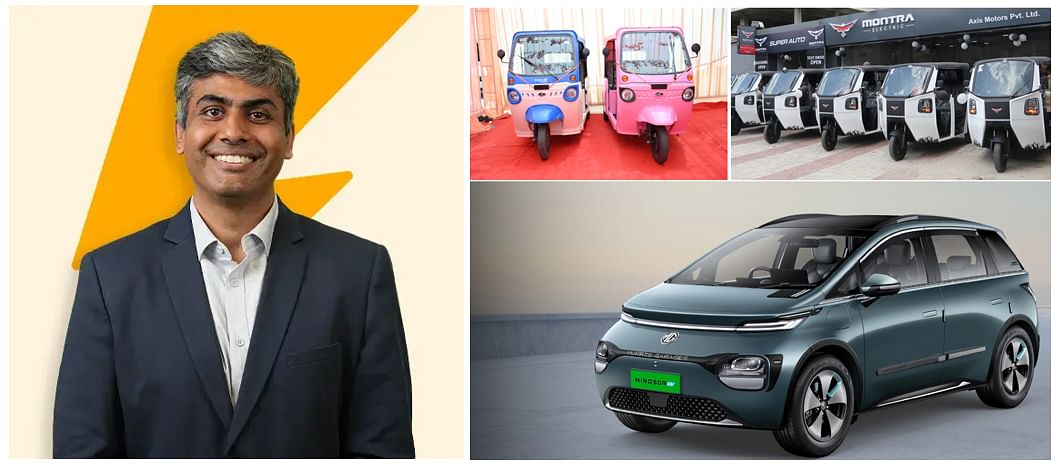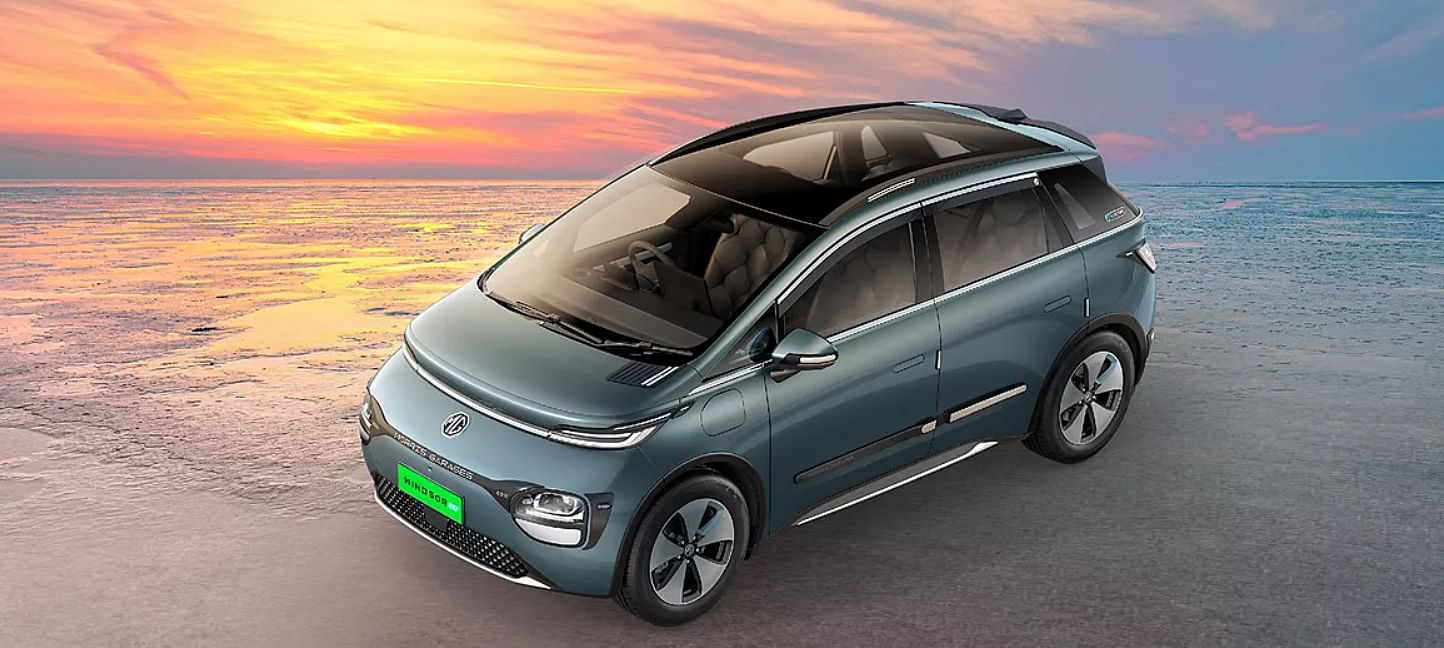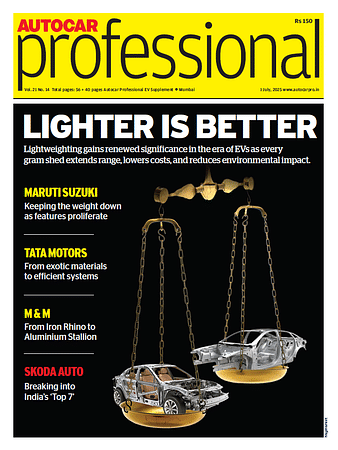Vidyut to make EVs more affordable with Battery-as-a-Service financing model
With its innovative pay-per-use battery financing options for EVs, the Bengaluru-based EV financing startup aims to make electric vehicles affordable by de-coupling the battery from the asset economics.
Bengaluru-based EV financing startup Vidyut is looking to achieve speedier traction by streamlining financing interactions between OEMs and customers in India’s emerging electric vehicle market, which registered a notable 27% year-on-year growth in CY24. The company aims to make EVs more affordable by virtue of its Battery-as-a-Service (BaaS) model that decouples the battery from an electric vehicle and makes risk assessment easier for financing a movable asset like an EV.
Despite being an area dominated by traditional banks that have tremendous financing muscle due to their easier access to capital, VidyutTech identified a void in the automotive sector which is increasingly becoming more digitised and connected.
According to Xitij Kothi, co-founder, Vidyut, “Given that the overall ecosystem was at a very nascent stage when it comes to EVs, we felt there was an opportunity to build an entire service layer in an integrated way. When we started in 2021, we envisioned creating an end-to-end ownership platform that spans from purchase to resale.”
 Xitij Kothi, co-founder, Vidyut: "Our solution is to treat the battery as fuel and finance it on a pay-per-use model. Consumers pay based on usage."
Xitij Kothi, co-founder, Vidyut: "Our solution is to treat the battery as fuel and finance it on a pay-per-use model. Consumers pay based on usage."
Speaking to Autocar Professional, he said that the startup tapped the inherent advantage of an EV’s connected nature to build an integrated ecosystem unlike the ICE ecosystem, wherein the dealer, financier, and insurance are managed by separate companies. “Although these entities are co-dependent, they operate independently. In the EV ecosystem, however, along with this co-dependency, there is an opportunity to create an advantage by integrating all these businesses. This is because EVs are connected vehicles, generating a significant amount of data,” he pointed out.
Kothi further explained that data from the IoT-equipped smart batteries in EVs can measure parameters like voltage, current, temperature, and state of health, and thus, can help assess the health of the battery or its remaining useful life (RUL) as well as the vehicle to address asset risks while financing. “The same capability can be used to determine the residual value (RV) pricing for vehicles or to perform predictive maintenance analytics,” he added.
As it began operations in November 2021, and subsequently witnessed the electric three-wheeler segment in India pick up significant pace around the same time, armed with its technology, Vidyut decided to commence its financing journey with the e-three-wheeler category. “At that point in time, the three-wheeler segment was at an inflection point in terms of EV adoption. There was a favourable regulatory framework in place, supported by state and central subsidies. Additionally, there was a top-down demand push—large e-commerce companies were asking logistics service providers (LSPs) to induct EVs into their fleets. This created on-ground demand,” highlighted Kothi.
The emergence of BaaS
With EVs typically commanding a 1.3X-1.5X higher price compared to their ICE counterparts, Vidyut’s initial mission revolves around making EVs affordable for its target customer – the individual owner-driver of an electric three-wheeler. The company targeted to make EV ownership accessible, affordable, and stress-free for consumers. This is where it came up with a unique solution: hybrid financing, or battery-as-a-service (BaaS), also referred to as pay-as-you-go financing.
As per Kothi, the problem with EVs boiled down to how to underwrite the asset, which largely emanated from the battery. In ICE vehicles, when a vehicle is purchased, it is only the asset, and not the fuel. The vehicle is entirely a CapEx (Capital Expenditure), while fuel is an OpEx (Operating Expense) that is paid for as a recurring cost out of the user’s pocket.
As a financier, underwriting the CapEx was straightforward: the vehicle had a finite life, and its value was easy to estimate. In EVs, however, the fuel (OpEx) is essentially embedded in the vehicle in the form of the battery. “This is what has driven up the upfront cost. One is essentially paying for the fuel upfront, making the vehicle more expensive,” he said.
“To address this, we decided to decouple the vehicle and the battery and finance them separately, as they are fundamentally different. For ICE vehicles, financing an asset meant underwriting 100% CapEx. In EVs, however, we were looking at an asset that was roughly 60-65% CapEx and 35-40% OpEx. This required a new approach to financing. Our solution was to treat the battery as fuel and finance it on a pay-per-use model. Consumers would pay based on usage: the more they use, the more they pay; the less they use, the less they pay—just like fuel. The chassis (the rest of the vehicle, excluding the battery) was comparable to a traditional vehicle in the ICE ecosystem,” Kothi explained.
The company claims that by removing the battery from the equation, it has made EVs more affordable upfront. For instance, while a three-wheeler CNG auto costs Rs 295,000 lakh, an electric three-wheeler costs Rs 400,000. However, with Vidyut’s model, if the battery (which costs about Rs 150,000) is de-coupled from the price of the vehicle, the EV’s cost comes down to Rs 250,000. This makes it Rs 45,000 cheaper than the CNG vehicle on a like-for-like basis. Additionally, the company has developed a per-kilometre pricing model for the battery, which costs around Rs 1.8-Rs 1.9 per kilometre.
The company has seen a notable offtake of its innovative financing option, and within three years of commencing operations, has tied up with key electric three-wheeler OEMs of the likes of Mahindra Last Mile Mobility, Piaggio, Euler, Altigreen, Montra Electric and Greaves, among others. Of late, Vidyut has also forayed into the electric passenger vehicle (PV) segment in the country by tying up with MG Motor India and enabling the carmaker to introduce the BaaS model with the MG Windsor EV launched in September 2024.
“This unique financing solution is how Vidyut started, and it remains the core value proposition we offer to consumers. In the last three years, we have been working in this space, largely focused on the three-wheeler cargo and passenger vehicle segments. After partnering JSW MG Motor India, we are now in discussions with several other OEMs, with the goal of adding more OEM customers to the PV category as well. Eventually, we aim to cover all vehicle segments, including two-wheelers, cars, three-wheelers, and slightly larger commercial vehicles,” Kothi outlined Vidyut’s growth ambitions.

As per Kothi, while the company has registered a significant consumer interest towards its innovative BaaS model now available across the 3-model MG EV portfolio in India, it is taking a gradual and measured approach to scaling up in this segment. “We have deliberately restricted ourselves in terms of geography and the dealerships we are working with. We want to ensure that the customer experience is top-notch because this is a very new model for car ownership. We are still learning how consumers respond and react post-financing. We are gathering insights on how they perceive the value proposition and addressing any initial operational challenges that might arise. We plan to scale up gradually,” he said.
Future fundraising plans
With nearly US$ 15 million raised in debt and equity over the last three years of its operations, Vidyut says raising capital is fundamental to its business. “Debt essentially serves as our raw material and we regularly raise both debt and equity. “Currently, we have a mix of on-balance-sheet debt as well as off-balance-sheet credit lines available to us. In terms of future fundraising plans, in a business like ours, the cycle is continuous. Every 12 to 18 months, we typically need to raise funds to sustain and scale,” Kothi explained.
“This involves deploying the debt we raise, infusing more equity, and then raising additional debt, and so on. Right now, we are focused on raising equity, and in the coming months, we will shore up more debt to move into the deployment phase. After that, we will circle back to raising equity again. It is a constant process to support our growth trajectory,” he added.
VidyutTech estimates penetration in the electric three-wheeler segment to touch 40-50% by 2030, growing from the existing levels of 16-20%. While two-wheeler EV penetration is upwards of 5%, the PV segment is presently around 1-2% penetration. With growing volumes and higher price points of electric vehicles compared to ICE, the company envisions a US$ 2 billion e-3W market by 2030, whereas the PV market being a US$ 41 billion market.
“However, profitability margins are generally lower in the car segment, especially when it comes to financing, compared to the commercial vehicle segment. But it is a high-value and high-volume market with different consumer segments. Once the car segment starts scaling, the overall Assets Under Management (AUM) could grow significantly. The key will be how much capital we can deploy, how much debt we can raise, and the cost of capital we can offer in the market.
“The car market is highly competitive, with large banks like ICICI and Axis already present. As a new startup entrant, it will not be easy to carve out a significant share. However, given that we are operating in the EV space with a differentiated product, we believe there's room to make an impact. We will see how the next three to five years unfold, but there is potential to build a 10x larger business in terms of AUM value in the car segment than in commercial vehicles. We also plan to enter a couple of other vehicle segments next year, although we are still evaluating them. By the end of the next financial year, we should be present in most vehicle segments, barring one or two,” Kothi signed off.
ALSO READ: Electric 3W industry scales new high in CY2024: 691,000 units, Mahindra and Bajaj Auto shine
Electric car and SUV sales hit highest level in CY2024: 99,000 units
RELATED ARTICLES
Auto Giants Explore Hybrid Strategy as EVs Hit Speed Bumps
Slower-than-expected EV adoption, tight CAFE norms and ever-present efficiency demands are giving hybrids a second wind ...
Continental Taps India as Global Hub for R&D and Manufacturing
Continental’s spin-off of its automotive business into AUMOVIO marks a strategic shift, placing India’s engineering and ...
India's EV Story: Promise, Progress, and Challenges
Amid the fanfare of new launches and soaring expectations, mainstream buyers remain hesitant.





 11 Jan 2025
11 Jan 2025
 10443 Views
10443 Views





 Ketan Thakkar
Ketan Thakkar


 Shahkar Abidi
Shahkar Abidi


